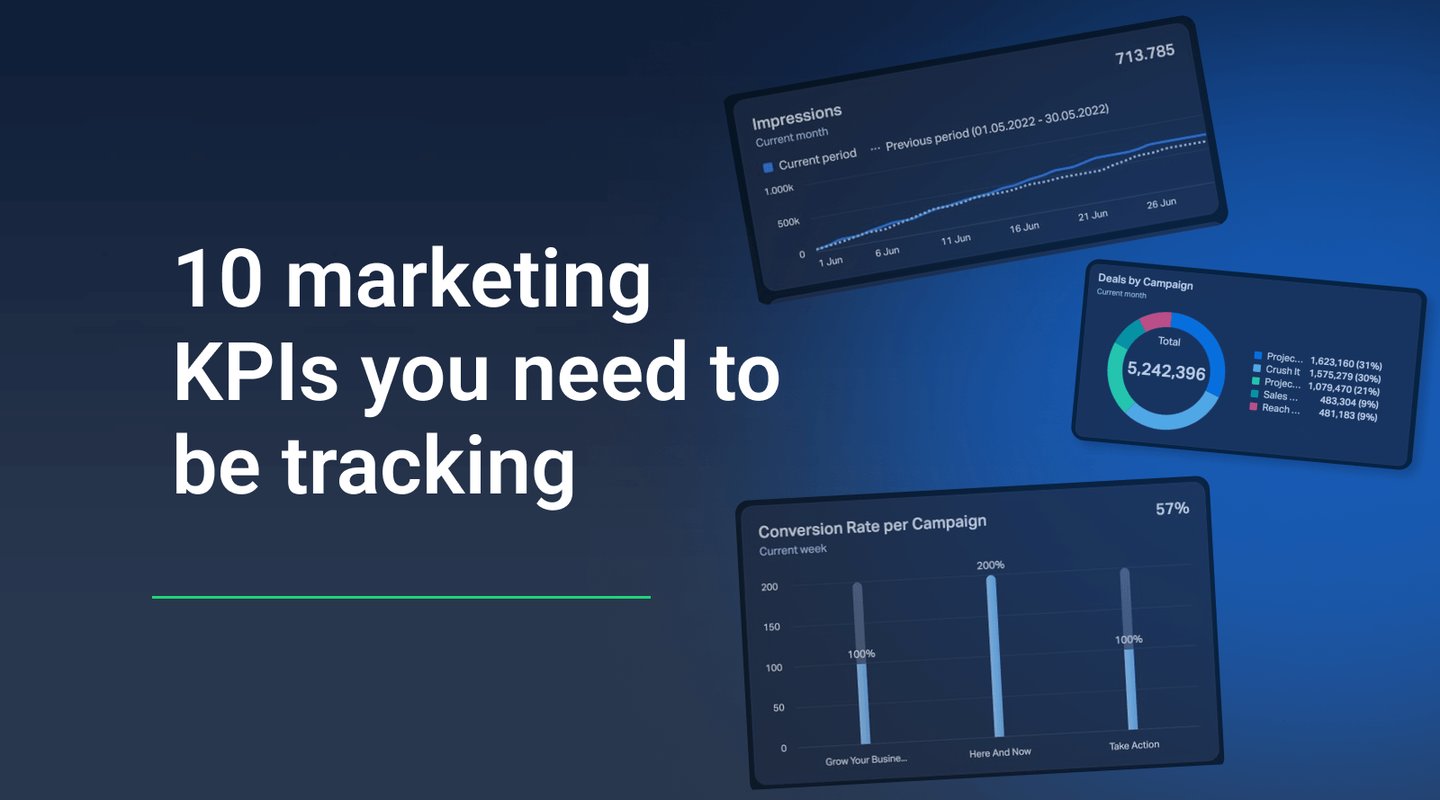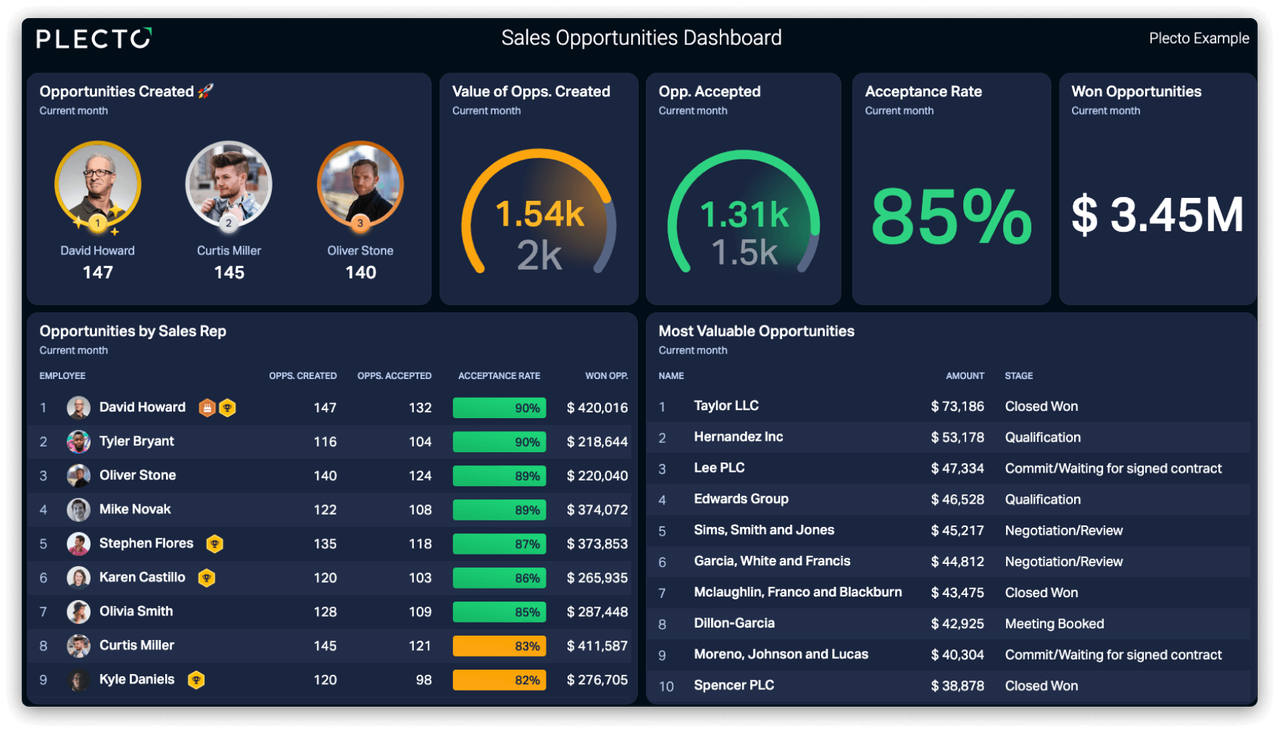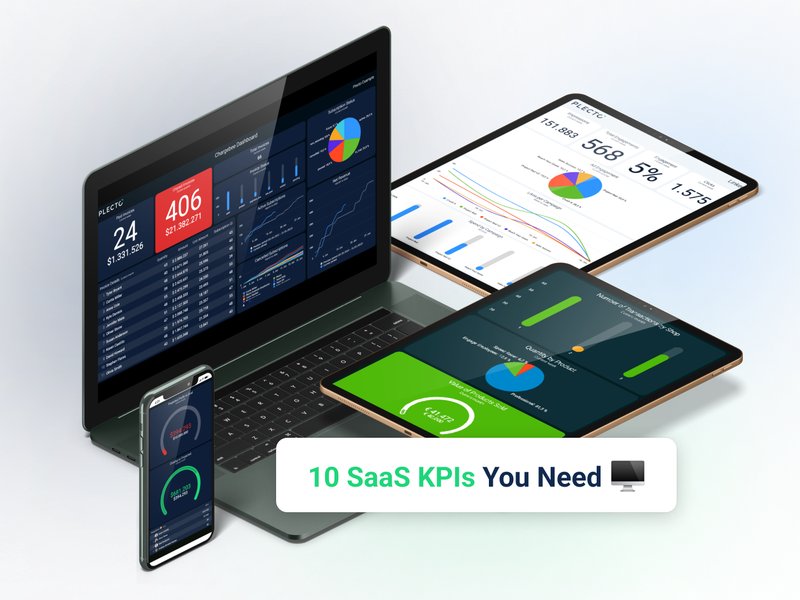Today’s marketers have unprecedented access to data. Using this data to track the right marketing KPIs is an excellent way to amp up your marketing efforts and make them more effective.
But how do you know that you’re tracking the right KPIs for marketing in your company? This guide will get you started with ten marketing measurements that you can track to gain actionable insights into your marketing strategy that can help you increase engagement, leads – and ultimately, sales.
What are marketing metrics?
Marketing KPIs are selected measurements that marketers regularly monitor to help drive marketing choices that impact the company’s bottom line. Without understanding why your marketing efforts are (or aren’t successful), you’re risking the possibility of wasting marketing resources while stunting your company’s performance.
10 Important KPIs for Marketing
With today’s access to almost unlimited data, all of your marketing efforts should be measurable. In this list, we’ve chosen ten examples of marketing KPIs to get you started toward becoming more intentional in your marketing measurements – and in turn, your marketing efforts.
1. Sales Growth
This Marketing KPI might seem like it should belong to the sales department, but that’s only part of the picture. While the sales department is ultimately responsible for closing deals, it’s up to either the marketing department or an inbound marketing agency to help generate the interest and leads that will eventually lead to sales. Looking at your company’s sales growth overall or during certain campaigns or drive periods can help you assess whether your strategy is working. After all, remember that alignment between your sales and marketing teams can improve your company's performance.
2. Return on Marketing Investment
Marketing departments exist to help companies make money, so this is one of the most important marketing KPIs. If the marketing department fails to earn its keep by bringing in new business, it may soon be on the chopping block. Even if the marketing department isn’t tracking ROI, someone in finance probably is tracking it. Marketing ROI is generally calculated using this formula:
Sales Growth – Marketing Expenditure ÷ Marketing Expenditure = Return on Marketing Investment
While it’s difficult to definitively correlate sales growth to marketing costs, it can give a good snapshot of whether the marketing strategy is on point.
3. Website Traffic to Website Lead Ratio
Many companies consider their website to be their most important marketing tool. Allocating significant resources to updating and maintaining the website doesn’t necessarily equate to success. To add business value, your website should be generating leads – of which a large proportion should be resulting in sales. This example of marketing KPIs measures the quality of your website traffic via its conversion rate (e.g., to leads, qualified leads, quotes, and sales). Looking at where your visitors’ interest drops can give useful clues into weak points in your messaging or content strategy.
Build your first dashboard.
Start your 14-day free trial today
4. Website Traffic
Website stats have been a favorite of marketers ever since these analytics became available. Some companies even have a dedicated employee – or even a team – whose only job is to analyze their website stats. In order to effectively market your company via its website, you need to know who you’re marketing to, how they found your site, and what they did once they got there. Performing click path analysis and looking into website marketing measurements like sessions, page views, pages per session, average session duration, and bounce rate can help you understand your potential customers to better anticipate their needs.
5. Social Media Reach and Engagement
If social media is part of your marketing mix (and it should be), it’s essential to understand how your company is performing on each of its platforms. Growth (i.e., likes and followers) is an excellent barometer of how you’re performing – and which types of content are most effective. Fortunately, most social media platforms provide built-in tracking tools that can provide these insights. Beyond likes and followers, it can be useful to look into things like how much of your website traffic is generated through these platforms, and how many of these visitors convert. Under-performing platforms might not necessarily indicate weak content, it could be that a particular platform isn’t appropriate for your business due to the medium or because it’s not where your customers are. If you have a product that’s more useful than it is pretty, Instagram might not be the best fit – or if your customer base is mostly B2B, Pinterest probably isn’t your best bet.
6. Email Marketing Performance
Most of today’s marketing departments have an email strategy, and many just take a casual look at how their emails perform. Email marketing isn’t a “schedule it and forget it” channel. At a minimum, every marketing email that goes out should be analyzed for unsubscribe rate, open rate, click-through rate, and forwards/shares. Tracking this over time will help you categorize which types of content perform well and which might be sabotaging your efforts.
7. Landing Page Conversion Rates
If you’re running email marketing or social media campaigns, you’re probably using landing pages. If not, you’re missing an opportunity to provide targeted messaging to people whose interest you’ve already piqued. While high click-through rates are important, what visitors do after they click is even more important. This marketing KPI measures how many landing page visitors complete the desired action (e.g., download a whitepaper, request more information, purchase the featured product). If you have a high click-through rate but a low conversion rate, there might be something wrong with your messaging – maybe your CTA needs work, your content isn’t compelling enough, or the process to goal completion is too arduous.
8. Blog Post Visits
Content marketing is a cornerstone of many online marketing strategies, and it can represent a significant expenditure. Therefore, to get the most out of your marketing spend, it’s important to get a grip on what your visitors want to read about – and what they don’t. An engaging and well-read blog can improve your marketing reach via social media shares and backlinks while building trust and improving your company’s credibility. In addition, outstanding SEO-optimized blog content can drive search engine traffic to your site, even without pay-per-click advertising. To reap the most benefits from your website’s blog, make sure to update it frequently. Additionally, to further improve your content marketing strategy, it's worth considering utilizing the Google Trends API. This will help you to gain valuable insights into popular topics and keywords, enabling you to create more targeted and effective content.
9. Goal Conversion Rates
All data-driven marketing plans should have goal conversion rates – for example, a desired action to be taken by a website visitor. Common online conversion goals include newsletter signups, eBook downloads, free trial signups, demo requests, or requests for more information. To track these important marketing KPIs, define a list of individual goals and then track the appropriate marketing measurements against those goals. This can help you refine your messaging strategy.
10. Return on Ad Spend
This is an easy one because it isn’t difficult to isolate cause and effect. Just like it sounds, return on ad spend measures the revenue that was generated against the amount that was spent on advertising.
Track Marketing KPIs with Automated Reporting
Monitoring and taking action on these ten KPIs for marketing will set you on the path to a more data-informed marketing strategy. With Plecto, you can schedule and generate automatic reports with custom KPIs and real-time data to help you keep abreast of how your marketing efforts are performing.
Take your marketing to the next level. Sign up for a free 14-day trial of Plecto!




